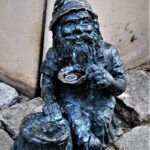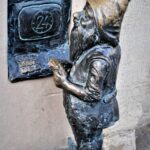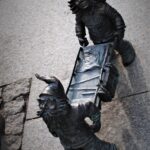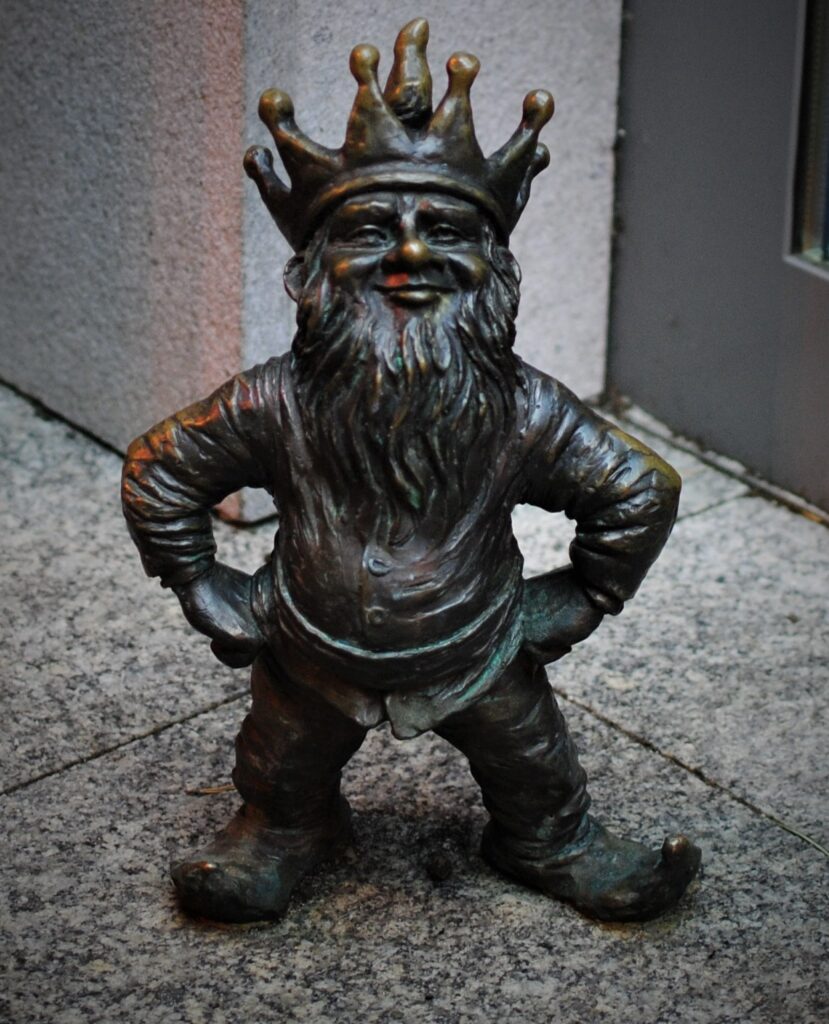
In researching the next book in the MacKay mysteries, I am learning a lot about protesting, boycotting, and secret societies. As in many time periods, certain everyday items can take on new significance. In the Pre-Revolutionary period, homespun fabric represented the boycott of English goods. A red and white flag symbolized the Sons of Liberty, a group of patriots who espoused ‘no taxation without representation.’ This group originated in Boston but quickly spread throughout all thirteen colonies in protest of the 1765 Stamp Act. Most of these protests were verbal, but they grew violent in some areas. Throughout history, there are many examples of items representing a cause. As I researched the topic, our trip to Wroclaw, Poland, came to mind. It is interesting how seemingly simple or meaningless items can carry a great deal of weight.

In the 1980s, in response to the Communist Regime, a new organization was born. The Orange Alternative began to use nonsense and the ridiculous to stage protests. Their calling card became the gnome. University student, Waldemar Fydrych, led the movement. When the government began restricting public spaces and sending militiamen out at night to spray paint over any subversive messages, the students would follow behind, painting gnomes on the painted-out surfaces. Scenes of soldiers painting over the ridiculous images of gnomes made their efforts appear pathetic to the outside world. Imagine a news item where a young man is arrested for painting a gnome.

By 1986, the movement had spread to most of Poland. Parades were planned where the organizers handed out orange cone hats for the people to wear as they marched for gnomes’ rights. These parades often led to the arrest of bystanders whose only crime was that they donned orange when they woke up that morning. Imagine that on the nightly news. The Communist regime finally fell in 1989.
To commemorate this downfall, in 2001, a gnome named Papa Krasnal was placed near the site where many protests occurred. In 2005, things really got interesting when the city council commissioned Tomasz Moczek, a local artist, to create five more gnomes. Suddenly, everyone wanted in on the game; local businesses began commissioning the cheeky creatures, and there was an explosion of gnomes. The number varies by different sources, but many claim that by 2019, there were 600 of them in the town! And on our visit, Dave and I believe we found a mere 10%. I returned home with 66 photos of the little buggers. Many of them are pretty entertaining and clever.

Gnomes, whether in the garden or at home, are very popular here in Germany. We have picked up a few along the way. But the debate rages about whether these are dwarfs or gnomes. During the Renaissance Period, we find writings about gnomes. These were small humanoid creatures that were ugly and mean. They are mischievous beings who don’t interact well with humans. They often live underground and harness the power of minerals.

Dwarfs, on the other hand, are mentioned in Norse mythology and are diminutive human-like creatures who are wise and friendly and are known for their metalworking skills. These beings tend to live in forests and mountains.
By this definition, it’s hard to look at these whimsical figures in Wroclaw and call them gnomes.

